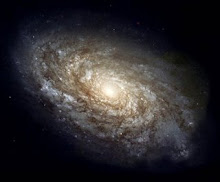| ||||||||||
| ||||||||||
| Mobile | Full (4:3) | Wide (16:9) |
Answers Conversation podcast
This week Steve Ham talks with AiG staff researcher Lee Anderson to answer the question, "Why Do We Regard the Creation Account as Historical Narrative?"
 This Week . . .
This Week . . .
- Christmas Sermons—Are Churches Preaching an Irrelevant Message? (Dec 6)
- Super-salty Water Sealed Beneath Chesapeake Bay Impact Crater (Dec 5)
- Iron Key to Preserving Dinosaur Soft Tissue (Dec 4)
- Days of Decline in the Church (Dec 3)
- Fruit-Eating Crocodiles Dispel Carnivorous Misconceptions (Dec 2)
- Galaxies—Unexplained Spirals (Dec 1)
- Eyes on Comet ISON's Fiery Fate but Not Oort Origins (Nov 30)
Video On Demand
The Origin of Old-Earth Geology, Part 8
Watch Video
Blog Highlights
- Ken Ham: Christianity Under Attack at the Movies
- Danny Faulkner: Comet ISON Was Here (Finis)
- Ken Ham: An Unholy Matrimony
- Ken Ham: United Methodist Church Ministers Support Same-Sex "Marriage"
Pray for AiG
Pray for our "New Christmas Town" outreach to our community at the Creation Museum. This live nativity and Garden of Lights runs every weekend of December.
Resources
Connect with Us
| Answers in Genesis Ark Encounter Creation Museum | |
| Answers in Genesis Ark Encounter Creation Museum | |
| Answers in Genesis Ark Encounter Creation Museum |
The information in today's blog courtesy of:
Answers in Genesis
2800 Bullittsburg Church Road, Petersburg, KY 41080
Customer service: 800-778-3390
Answers in Genesis
2800 Bullittsburg Church Road, Petersburg, KY 41080
Customer service: 800-778-3390

No comments:
Post a Comment